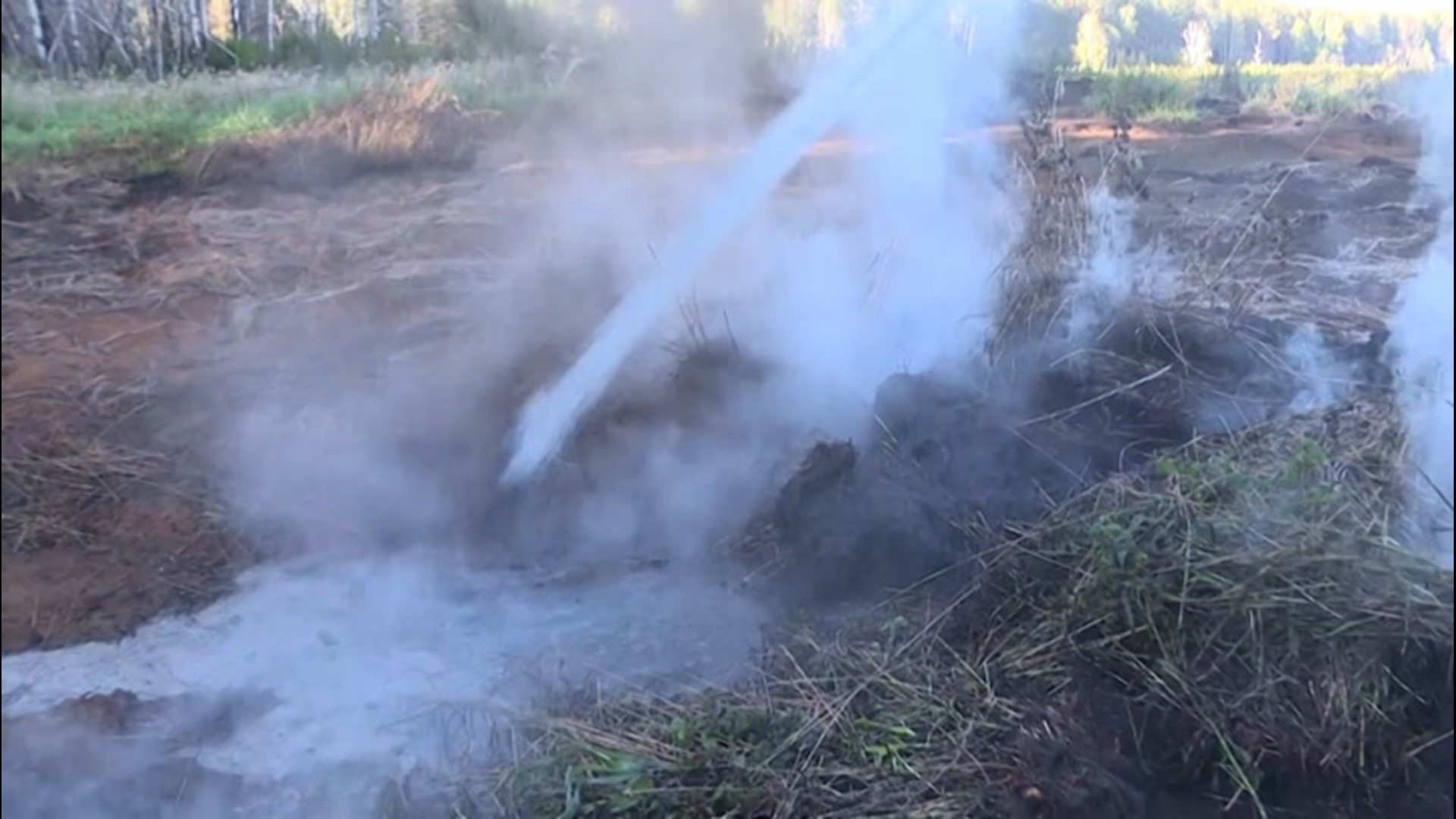Record-setting weather events have made global headlines throughout 2020, but some strange phenomena have slipped through the cracks, some of which have taken on frightening nicknames that make those young at heart think of Halloween.
Halloween may be a little extra spooky this year as there will be a full moon glowing on Halloween night for the first time in 19 years.
The eerie glow of the full moon should be visible across much of North America over the weekend with dry weather in the forecast for much of the country, but this promising trick-or-treat forecast is far from some of the weirdest weather that has been seen so far in 2020.
Eerie and abnormal weather phenomena have been reported all around the globe this year, some even taking on ghostly nicknames that sound like they are straight out of a horror movie.
Here are the top five ghoulish weather events of 2020.
An unusual chill caused Floridians to shiver in the opening weeks of 2020 as a cold spell descended upon the Sunshine State and the cold weather caused some strange objects to fall to the ground. Temperatures dipped into the 30s F as far south as Miami, making it one of the coldest nights there in nearly a decade.
Iguanas in trees became stiff in the cold air, causing the cold-blooded creatures to fall to the ground, where they appeared to be dead. However, they were merely in a cold-induced slumber.
As the sun rose and the temperature crept upward, the iguanas eventually warmed up and reanimated to their former selves.
"Despite the fact that it wasn't an official warning, the fact that it's such a unique aspect of the cold temperatures certainly made it take a life of its own on social media," Robert Molleda, a warning coordination meteorologist with the NWS in Miami, told AccuWeather.
Just like a monster coming back to life with the help of a mad scientist, one storm in the record-setting Atlantic hurricane season managed to take on a second life after dissipating.
Paulette formed on Monday, Sept. 7, over the open waters of the Atlantic Ocean, made landfall on the island of Bermuda on Monday, Sept. 14, and then transitioned to a post-tropical cyclone by Wednesday, Sept. 16. This means that it lost its tropical characteristics, which usually spells the end of the storm.
But Paulette was a rare exception.
The system regenerated into a tropical storm on Monday, Sept. 21, reclaiming the name Paulette after it re-gained tropical characteristics.
The regeneration of tropical systems is very uncommon, but has happened several times in the past. Most notably, in 2004, the little that was left of Hurricane Ivan tracked back into the Gulf of Mexico where the ghost of the former hurricane restrengthened into a tropical storm and made landfall near the border of Texas and Louisiana.
Summer in Antarctica can still be snowy, and researchers earlier this year stepped outside to see a bizarre-colored landscape surrounding their research station. The snow near the Vernadsky Research Base had turned red.
The blood-red appearance is due to alga that lives in the snow that thrives in cold climates. It has been seen at high elevations elsewhere around the globe, including the Alps, the Sierra Nevada, the Cascades and the Rocky Mountains.
The spectacle is also referred to as "watermelon snow" and can change the way that the snow reflects sunlight. It is harmless to walk on, but it is recommended to avoid eating the red snow.
Double, double toil and trouble; Fire burn and the ground bubble. This may be a more fitting phrase than the traditional witch's saying for the next ghoulish phenomenon of 2020.
As historic fires across the western U.S. make headlines, firefighters on the other side of the globe have been battling a completely different type of wildfire nicknamed "zombie fires."
These blazes burn underground, are water-resistant and can burn throughout the frigid Russian winters. One fire in particular has been burning for at least five years.
Zombie fires are not exclusive to Siberia. Earlier this year, this unique type of wildfire has been reported in Alaska, Canada and Greenland, according to UPI.
This type of fire is uncommon, but have started to occur more frequently in recent years as groundwater levels drop, especially in years of drought.
A spooky sound echoed in the air of the Bay Area on June 5, a noise caused by Mother Nature's trip across the Golden Gate Bridge.
A breeze blowing across the railings of the famous bridge at just the right speed and angle made it sound like it was whistling from a viewpoint of around a mile away.
The railings responsible for the eerie hum were installed earlier in 2020, and engineers are working to correct the issue, according to SFIST.

